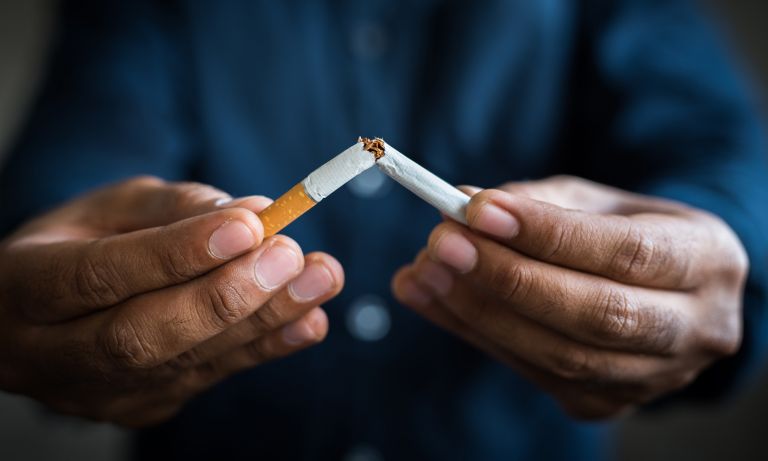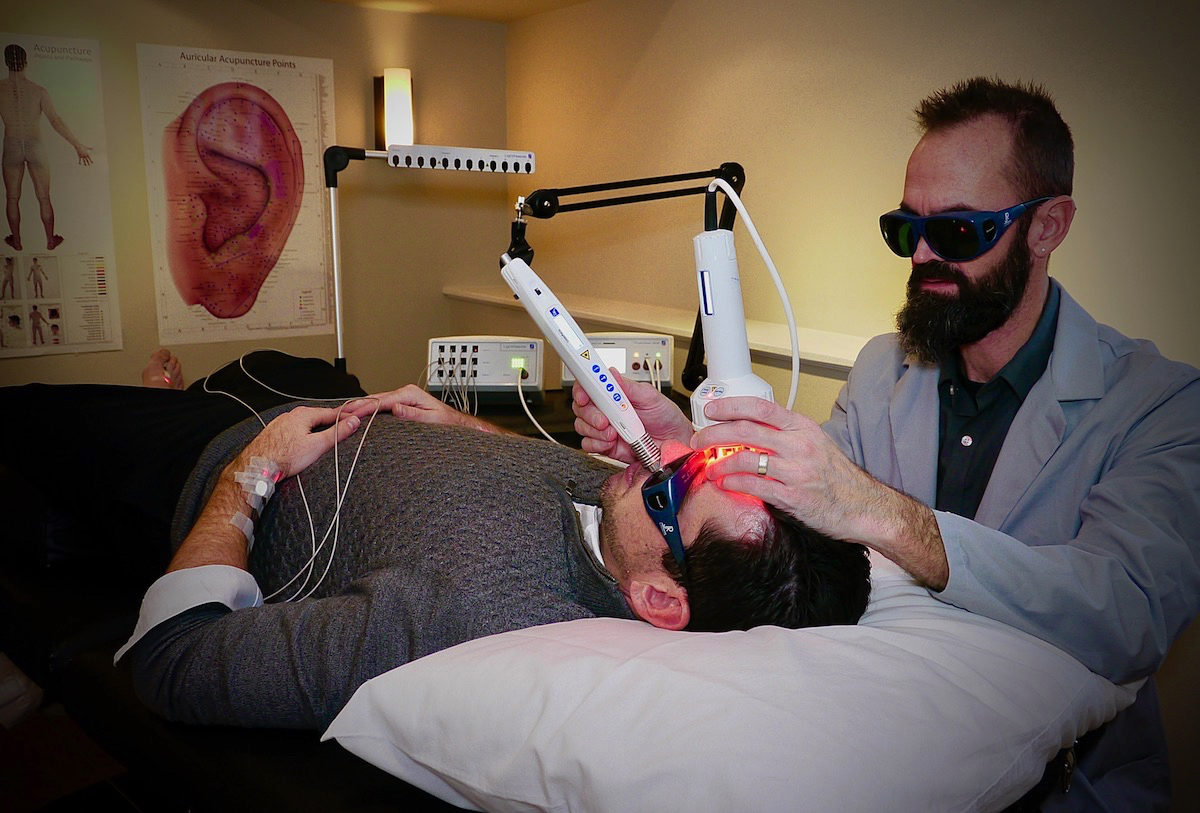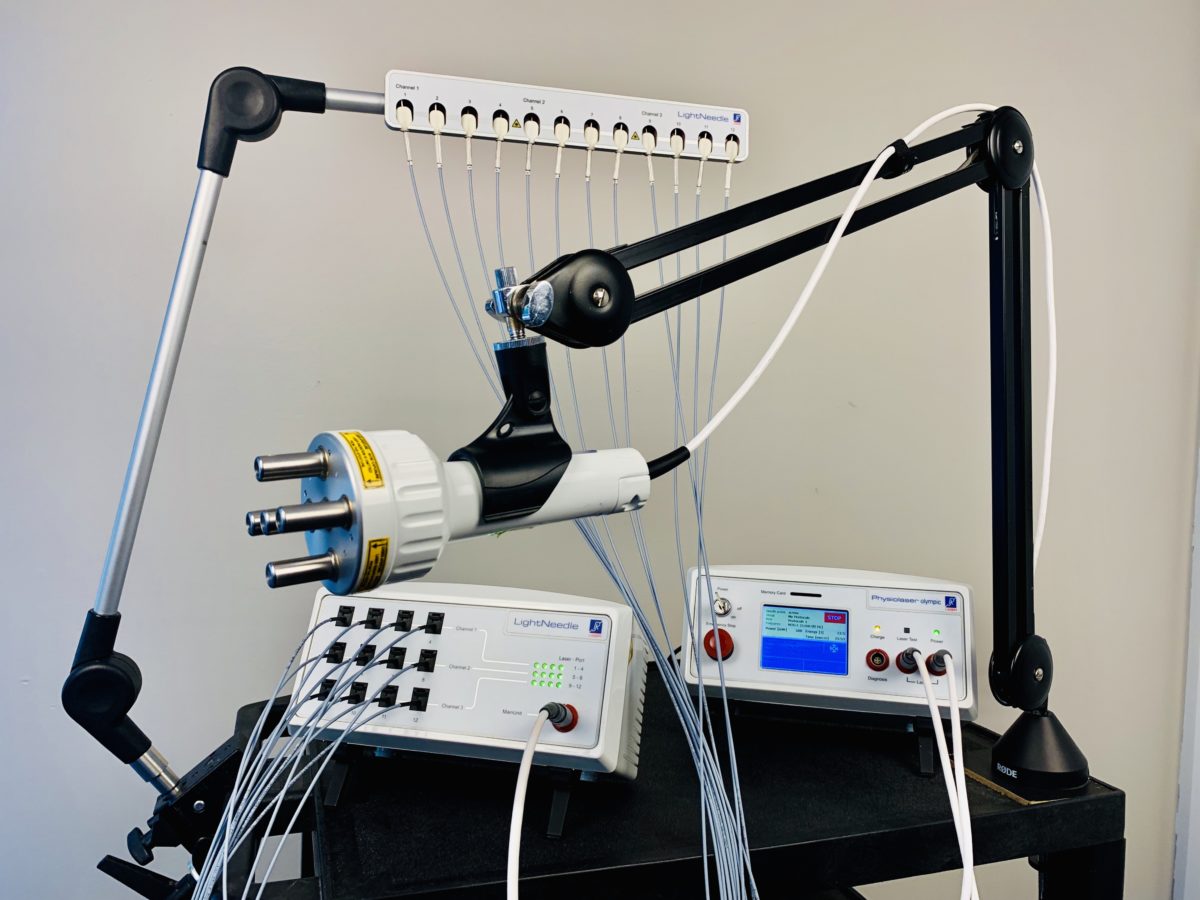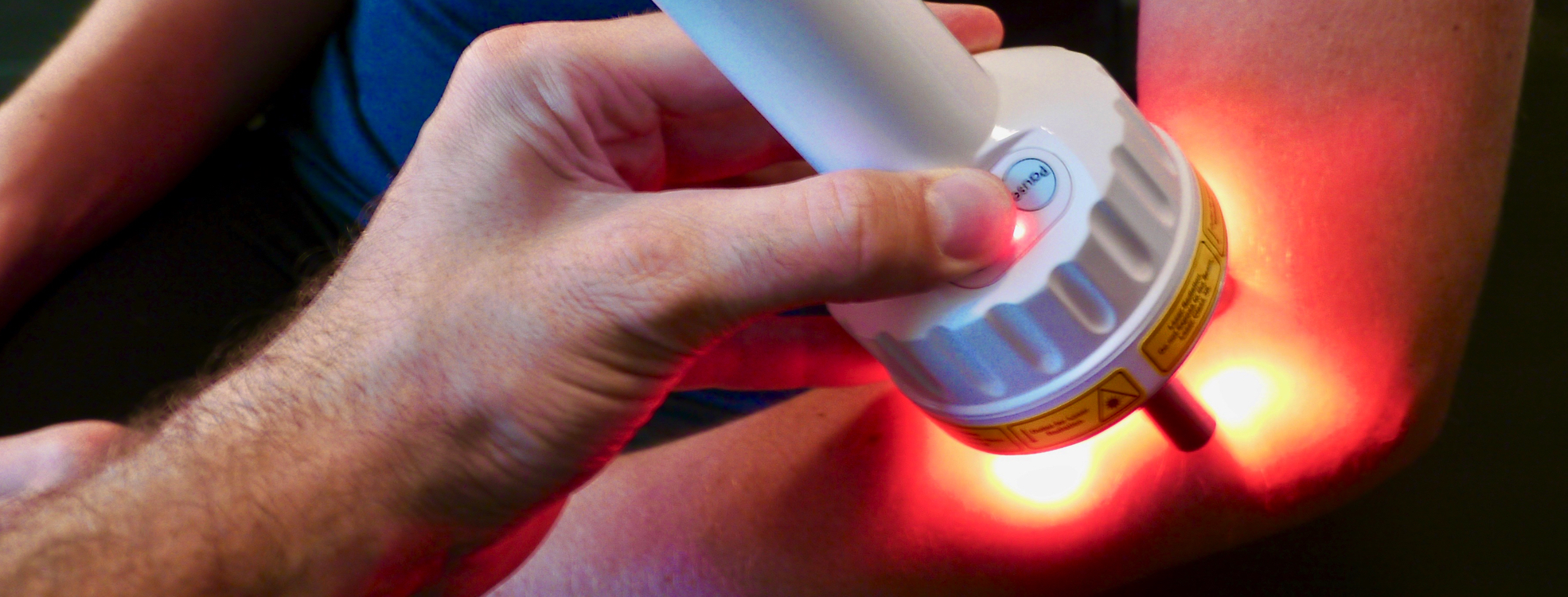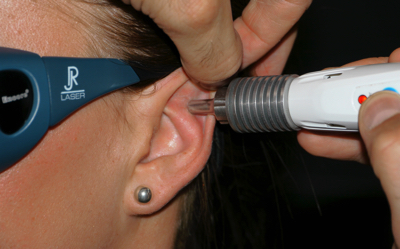Laser Therapy vs. Other Methods For Smoking Cessation
Low-Level Laser Therapy (LLLT) or laser acupuncture is gaining more attention as an effective method for helping individuals quit smoking cigarettes and vaping nicotine — but also other addictions or negative habits like excessive use of marijuana, alcohol, street drugs, and even sugar.
Low-level laser therapy utilizes low-level laser beam technology directed at specific energy points on the body, such as the ears, forehead, nose, hands, and feet. By stimulating these points, laser therapy promotes reduced cravings, relief from withdrawal symptoms, and overall well-being during the nicotine-quitting process.
The strengths of laser therapy for quitting smoking include the fact that it is non-invasive, painless, and does not require the use of drugs or nicotine replacements. It is also a safe and holistic approach that takes a direct aim at addressing the physiological and habitual aspects of addiction. Because of these features, people increasingly hear first-hand testimonials from people in their social network about its positive results.
With the above in mind, you may be asking yourself, what are the success rates of quitting smoking using laser therapy versus other methods?
Traditional and Emerging Methods for Quitting Smoking
Traditional methods for smoking cessation include pharmaceutical options like Champix/Chantix (Varenicline) and Zyban (Bupropion). Others include nicotine replacement therapy (NRT) options such as nicotine patches and inhalers that deliver controlled amounts of nicotine. This list includes behavioral counseling, support groups, needle acupuncture, and other emerging methods like smartphone-based apps.
Let’s take a closer look at demonstrable evidence of both traditional and emerging methods for smoking cessation and quitting nicotine consumption:
- Nicotine replacement therapy (NRT): NRT involves using products such as nicotine patches, gum, lozenges, or inhalers to help reduce cravings and withdrawal symptoms. The success rate of NRT in assisting individuals to quit smoking varies. Still, one study by the New England Journal of Medicine presents only a lowly 9.9% abstinence rate after one year of use—source: https://www.nejm.org/doi/10.1056/nejmoa1808779.
- Electronic cigarettes (e-cigarettes): E-cigarettes are battery-operated devices that deliver nicotine in the form of vapor. Their success rate in helping individuals quit smoking is uninspiring: 15% abstinence rate after 24 weeks of use—source: https://pubmed.ncbi.nlm.nih.gov/29304395/.
- Bupropion: Bupropion is an antidepressant medication that can help people quit smoking by reducing cravings and withdrawal symptoms. The success rate of bupropion presents only a 13.6% smoking cessation rate after one year of use—source: https://www.ncbi.nlm.nih.gov/pmc/articles/PMC5286845/.
- Varenicline is another prescription medication that can help individuals quit smoking by reducing cravings and withdrawal symptoms from nicotine. The success rate of Varenicline shows a 6.2% smoking cessation rate after one year of use—source: https://www.ncbi.nlm.nih.gov/pmc/articles/PMC5286845/.
- Group support: Group support can help individuals quit smoking by providing encouragement, motivation, and accountability. It can take the form of in-person support groups or online communities. The success rate of group support varies, but one study demonstrates a noteworthy 35.5% quit rate after four weeks—source: https://onlinelibrary.wiley.com/doi/abs/10.1111/j.1360-0443.2008.02446.x.
- Telephone quitlines: Telephone quitlines provide individuals access to trained counselors who can provide support and advice on quitting smoking. Although the success rate of telephone quitlines in helping individuals quit smoking is not overly impressive, this study presents a 9.1% success rate after one year—source: https://www.nejm.org/doi/full/10.1056/NEJMsa020660.
- Exercise: It is theorized that regular physical activity may help reduce cravings and withdrawal symptoms from nicotine, mainly attributable to endorphin release. Surprisingly, “low-certainty evidence” demonstrates this—source: https://www.ncbi.nlm.nih.gov/pmc/articles/PMC6819982/.
- Hypnosis/Hypnotherapy: Hypnosis involves inducing a state of deep relaxation and increased suggestibility to help individuals overcome cravings and quit smoking. The success rate of hypnosis in assisting individuals to quit smoking varies. One study demonstrates a 24% cessation rate at one year—source: https://pubmed.ncbi.nlm.nih.gov/18569754/.
- Cognitive-behavioral therapy (CBT): CBT is a type of talk therapy that can help individuals identify and change negative thought patterns and behaviors related to smoking. Quit Genius (Palego) is one leading organization utilizing this approach. One journal article presented that CBT’s success rate in helping individuals quit smoking is 22.6% at one year—source: https://academic.oup.com/ntr/article/24/11/1763/6574261.
- Mindfulness and relaxation techniques: meditation and deep breathing techniques are reported by some sources to help individuals manage stress and cravings associated with quitting smoking/nicotine. However — demonstrable scientific evidence is not yet strong. Among these methods, Mindfulness-Based Cognitive Therapy (MCBT) shows some effectiveness. It is the author’s professional and anecdotal opinion that mindfulness-based techniques seem most beneficial for quitting smoking when combined with other smoking cessation methods versus being utilized independently. Sources: https://pubmed.ncbi.nlm.nih.gov/35420700/, https://www.researchgate.net/publication/320314605_Effectiveness_of_Mindfulness-Based_Cognitive_Therapy_on_Reducing_Smoking_among_Addicts and https://ctri.wisc.edu/2021/12/02/mindfulness-app-helps-people-avoid-smoking/.
- Smartphone-Based Apps For Smoking Cessation: The goal of these apps is to support and motivate users via a combination of features that include tracking/monitoring their smoking habits, setting goals, suggestions for coping with cravings, reminders, financial tracking, gamification, and more. Success rates are hard to demonstrate due to user adherence. Current evidence implies they are best utilized with other cessation methods to boost results versus being used alone—source: https://www.ncbi.nlm.nih.gov/pmc/articles/PMC10160935/.
- Acupuncture using needles: Acupuncture involves the insertion of fine needles into specific points on the body to help reduce cravings and withdrawal symptoms. The success rate of needle acupuncture in assisting individuals to quit smoking varies considerably in scientific studies — this is in large part attributable to different acupuncture methodologies/styles being employed and lack of congruity of application. Laser acupuncture, due to its inherently more modern delivery using sophisticated equipment and application to targeted tissues using laser light, lends itself by design to a much more quantifiable and calculated approach. In the author’s clinical experience, laser acupuncture promotes significantly more consistent and measurable results than needles. One exciting parallel when comparing needle and laser acupuncture for smoking cessation is that both promote increased benefits when combined with counseling/coaching and educational smoking cessation programs—source: https://www.ncbi.nlm.nih.gov/pmc/articles/PMC6662782/.
In summary, most of the above methods demonstrate weak scientific support for smoking cessation and quitting nicotine consumption. The exceptions to this are group counseling sessions, mindfulness-based techniques/MCBT, coaching/counseling, educational programs, and smartphone-based apps. These exceptions, if utilized, should be combined with a more proven methodology and not alone for optimal results.
Low-Level Laser Therapy For Quitting Smoking — An Effective Smoking Cessation Methodology
Low-level laser therapy or laser acupuncture is an effective alternative to the methods presented above. Just because it is still largely ignored and not presented as a smoking cessation method by the vast majority of professionals working in the Western medical model to their patients — does not mean it is not practical.
One of the best-designed laser acupuncture studies that Lazer Dave utilizes with his Ottawa Laser Quit Smoking Program treatments demonstrates an 87.5% effectiveness rate—source: https://pubmed.ncbi.nlm.nih.gov/29937971/.
The Ottawa Laser Solutions Laser Quit program combines a clinically effective intervention methodology with coaching incorporating Lazer Dave’s Prep Guide, habit change/mindfulness suggestions, recommended smartphone apps, and more.
In Summary
It is important to note that the effectiveness rates presented above are not absolute, and individual experiences may differ. While laser therapy can significantly increase the chances of quitting smoking, it is not a magical cure and requires a genuine desire and commitment from the smoker to maximize results. Results are not guaranteed.
Always consult your doctor regarding any health concerns, changes in medications, or similar.
For more information regarding the Ottawa Laser Quit Smoking Program, please follow this link: https://ottawalasersolutions.com/ottawa-kanata-westboro-nepean-quit-stop-smoking-laser-therapy/.

